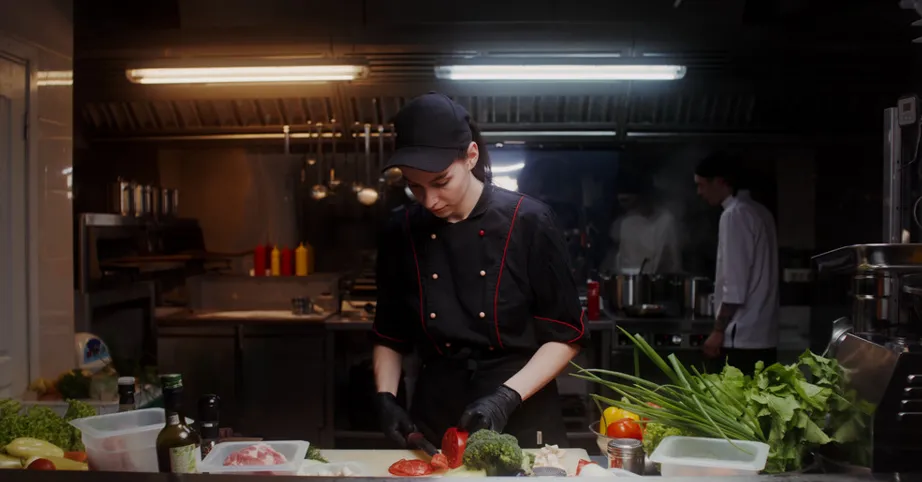Commercial kitchens are the center of the foodservice operation, whether the entity is a restaurant or cafe, caterer, or institutional foodservice location. Commercial kitchens are built to withstand high-volume food preparation and meet strict health and sanitation codes. Commercial kitchens differ from residential kitchens in that they have to keep workflow, durability, and local code compliance in mind before anything else, and planning is key to success.
A strategically designed commercial kitchen structures the food preparation so that wastage is minimized and the process is made simple. It enables chefs and personnel to move from station to station and back without any hassle, based on whether they are chopping vegetables, cooking food, or plating dishes. Effective zoning, such as having raw and cooked food separated from each other, is also part of how cross-contamination and food safety are avoided. Specialty appliances, such as convection ovens, commercial blenders, and commercial panini grills, are often installed in commercial kitchens to optimize performance for particular kinds of cooking.
Designing Workflows Efficiently
Efficiency is at the center of an efficient commercial kitchen. The layout must be able to accommodate an army of staff working together without congestion. Two of the most popular layouts are the assembly line idea, which is best for large-volume businesses like fast-casual restaurants, and the island idea, where chefs can access equipment and ingredients on all sides.
Ergonomics also functions in a commercial kitchen design. Counter tops, shelf placement, and equipment placement need to be reduced to reduce fatigue and strain on employees. Managers can conserve time and effort required to transport food through the prep, cooking, and plating steps by considering workflow. Effective workflow has a direct impact on the speed of service, the quality of the food, and customer satisfaction.
Choosing the Right Equipment
Commercial cooking equipment purchases must be a combination of functionality, durability, and expense. From dishwasher to refrigerator, they all have a role in the effectiveness of the kitchen. A good example is the commercial panini grill as standard equipment in the cafe or the sandwich shop, with an even heat supply and rapid cooking of paninis, sandwiches, and other pressed foods. Choosing equipment that can withstand heavy use while delivering consistent output is critical to operations.
Commercial equipment differs significantly from household kitchen appliances. They are designed to operate continuously under high loads and need to meet industry performance and safety testing. Quality equipment has low maintenance bills, lower downtime, and provides a constant supply of food to customer specifications.
Integration of Technology into Commercial Kitchens
The commercial kitchens of today make greater use of technology to enhance efficiency and consistency. Computer ordering, automated inventory, and intelligent cooking equipment allow staff to focus on service and quality rather than manual monitoring.
For example, high-end commercial panini presses are equipped with programmable heat settings, and therefore each sandwich is properly cooked without the ever-vigilant eye needed. In the same way, smart ovens and induction cooking surfaces enable accurate control of heat, less likely to overcook or undercook. The integration of technology enables kitchen spaces to become standardized, productive, and guarantee a safer space.
Energy Efficiency and Sustainability
Energy efficiency is a major concern in commercial kitchen operations and appliance selection. Energy-efficient appliances, lighting, and insulation can conserve energy and natural resources, saving on utility bills. Grease traps, low-flow fixtures, and recycling systems are all elements of sustainable practices that are increasingly valued by consumers and regulators.
Green kitchen design also entails utilizing longer-lasting equipment that requires less repair. Purchasing a commercial panini grill with energy-saving features, for example, will save electricity without detracting from cooking performance. Utilizing sustainable, long-term equipment helps businesses reduce operating expenses and demonstrate environmental sensitivity.
Staff Training and Management
With even a modern commercial kitchen, there must be staff with training to get it to perform at its best. Training must involve equipment use, safety, and hygiene. Cross-training staff at different stations ensures flexibility and guarantees the kitchen’s continuity during busy periods.
Good systems of management and communication also improve productivity. Scheduling, task delegation, and workflow monitoring allow managers to align the costs of labor with extremely high levels of service. A well-trained and coordinated staff can optimize kitchen layout and equipment, along with specialized equipment such as commercial panini grills, ovens, and prep stations.
A successful commercial kitchen is a combination of good design, good kit, good hygiene procedure, and properly trained staff. From the initial design and store arrangements through to the availability of specialist kit like a commercial panini grill, it’s all a factor in a safe and streamlined food preparation environment. With an emphasis on efficiency, safety, and sustainability, businesses can meet customer demand, maintain constant quality, and realize maximum expenditure in operations.
Operating a high-volume restaurant, high-volume café, or large institutional kitchen, the investment in good design and well-equipped commercial space is paramount. The integration of design, equipment, and workflow solutions in the right manner ensures that a commercial kitchen is able to meet high-volume demands without compromising on high standards. Any foodservice operation’s success depends ultimately upon the careful integration of design, technology, and employee competence, and therefore, the commercial kitchen is a hub of culinary success.

